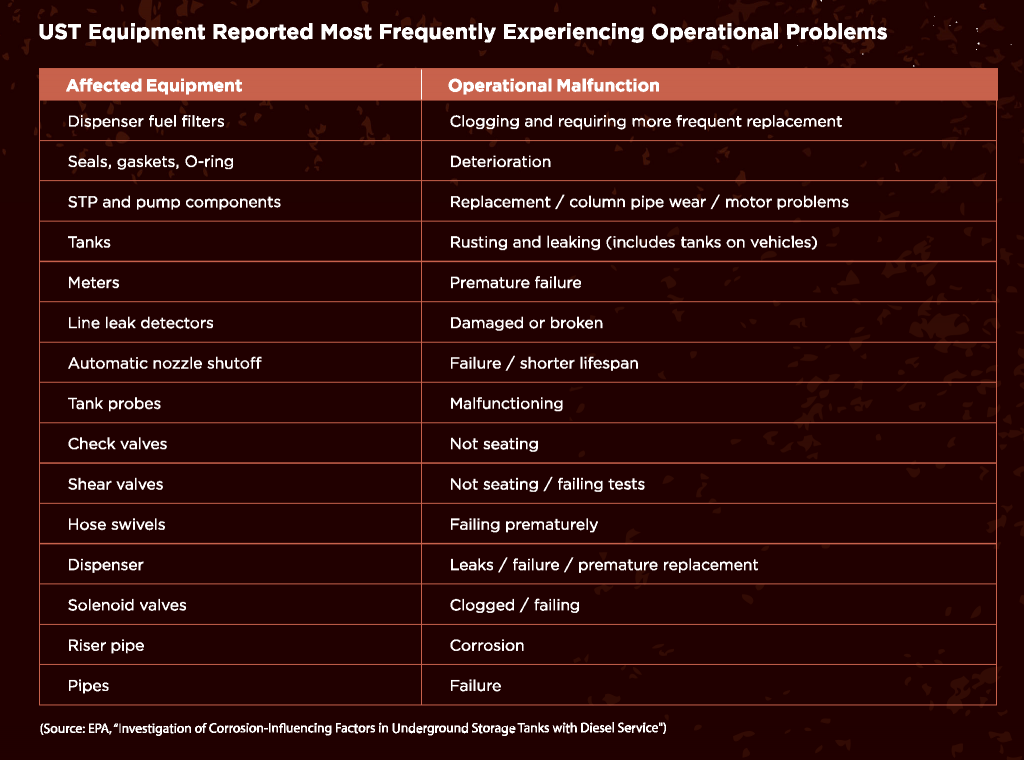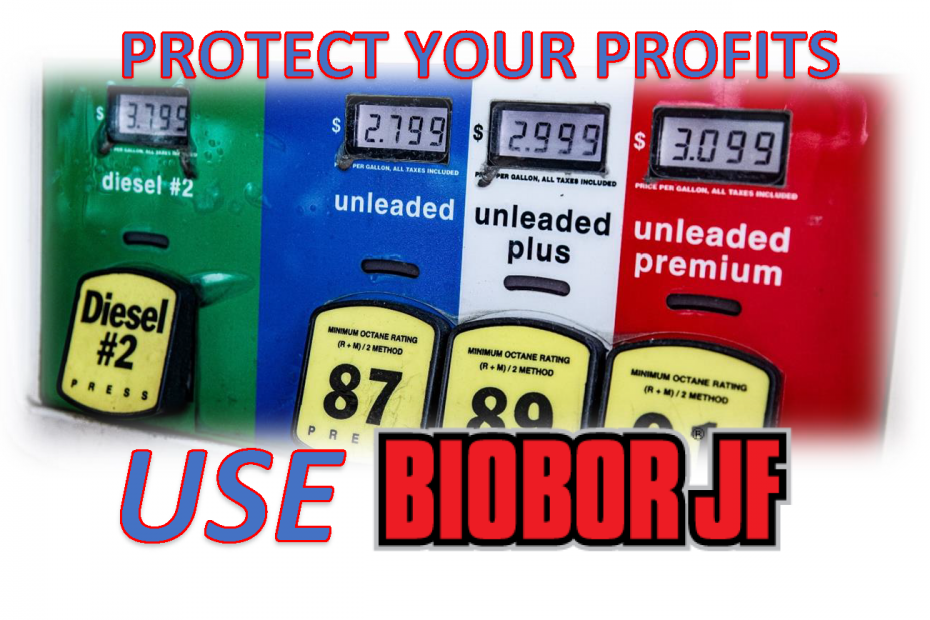Almost 80% of fuel used in the United States is sold through over 120,000 convenience stores. The average store sells around 1.2 million gallons per year. Sites with large forecourts can sell more than 5 times that number. That being said, anything that reduces fuel sales hurts the bottom line. One of the most significant issues contributing to reduced profits is fuel quality – specifically microbial contaminants. The chart below, from the EPA, shows just how many issues are a result of microbial contamination.

There have been numerous studies showing the damaging effects of microbes in fuel. Something most often missed is the fact that microbes are stealing your profits. It is a fact that microbes are present in every fuel system. The question is, “How bad is your microbial contamination and how is that affecting my profits?” Just a glance through the list above and it is easy to see that microbes will increase my maintenance cost, but a deeper dive will also show you how it reduces fuel sales at the pump.
Studies have shown how impatient consumers are at the pump. Slow flow pumps are contributor to consumer loss at convenience stores. People just do not want to wait. While this is a serious issue, it is not the single most important factor. Fact, there are only so many gallons a month that can be pumped through a single dispenser. Most dispensers pump 10 gallons per minute. If the dispenser was pumping 24 hours per day at the maximum output, that would equal 14,400 gallons. We all know that will never happen. The average dispenser only actively pumps 30 minutes out of an hour and not for the entire 24 hours either. It takes time for cars to reposition and most fuel sites are busy only certain hours during the day. This being the case, any flow restriction will slow the pumping down and reduce the number of cars that can be filled in an allotted time. So how much is a slow flow issue actually costing me?
The average convenience store, pumping $1.2 million gallons per year, with fuel dispensers contributing to a 20% flow reduction would cost the store over $811,000 in annual revenues.
You might reply, my dispensers are not that slow. However, recent studies show the average retail dispenser only pumps between 6 and 8 gallons per minute. That’s a net reduction between 20 and 40 percent. WOW!!! If microbial contamination is the main cause, how do you effectively remediate the issue? The simplest and most effective way to alleviate microbes is to use a quality fuel biocide – not just any biocide – use Biobor JF.
4 Steps to Reduce Dispenser Slow Flow and Increase Profits
- Start with clean fuel tanks. If they have been in service for several years and never cleaned, they should be cleaned.
- Use Biobor JF before tank cleaning to kill existing microbial contamination.
- Inspect the system to make sure there are no leaks. Any water intrusion will contribute to microbial growth.
- Use Biobor JF regularly. The best way to eliminate slow flow issues cause by microbial contamination is to use Biobor JF in all the fuel, all the time. However, using it quarterly will keep the microbes at bay, reducing slow flow issues and adding to your bottom line.
The cost of the biocide is negligible considering the revenue lost from ignoring slow flow issues. Need more advice on how to implement a program? Hammonds Fuel Additives can help develop a program that meets your needs and provide proper training. Contact us today and schedule an appointment.
Follow BioborShare the Post








